Spills from oil and natural gas operations pose a risk to water resources, communities and land. The Western Toxic Release Map visualizes the location, size and contents of drilling-related chemical spills.
The map plots over 13,600 spills in Colorado and New Mexico between 2000 and 2013. Together, the spills released nearly 102 million gallons of oil, drilling fluids and other toxic materials into the environment. An additional 1,668 spills could not be mapped because of reporting errors.
Over the last thirteen years, Colorado experienced more than 4,900 spills—that’s 350 spills each year or about one per day. In New Mexico, there were more than 10,300 spills in that same timeframe, or 740 spills per year.
Different oil and gas spill reporting requirements in New Mexico and Colorado help account for the gap in the number of spills between the two states. For example, oil and gas companies in New Mexico are required to report the unauthorized release of natural gas in significant quantities, but are not required to do so in Colorado.
To learn more about oil and gas spills in Colorado and New Mexico, please visit the Center for Western Priorities’ Toxic Release Tracker, which is updated monthly.
Colorado Toxic Release Tracker
New Mexico Toxic Release Tracker
The Western Toxic Release Map will be updated to include oil and gas spills in other Western states as the data becomes available.
Map Citations:
Colorado Spills -
Colorado Oil and Gas Conservation Commission
New Mexico Spills -
New Mexico Oil Conservation Division
Shale Basins -
U.S. Energy Information Administration


